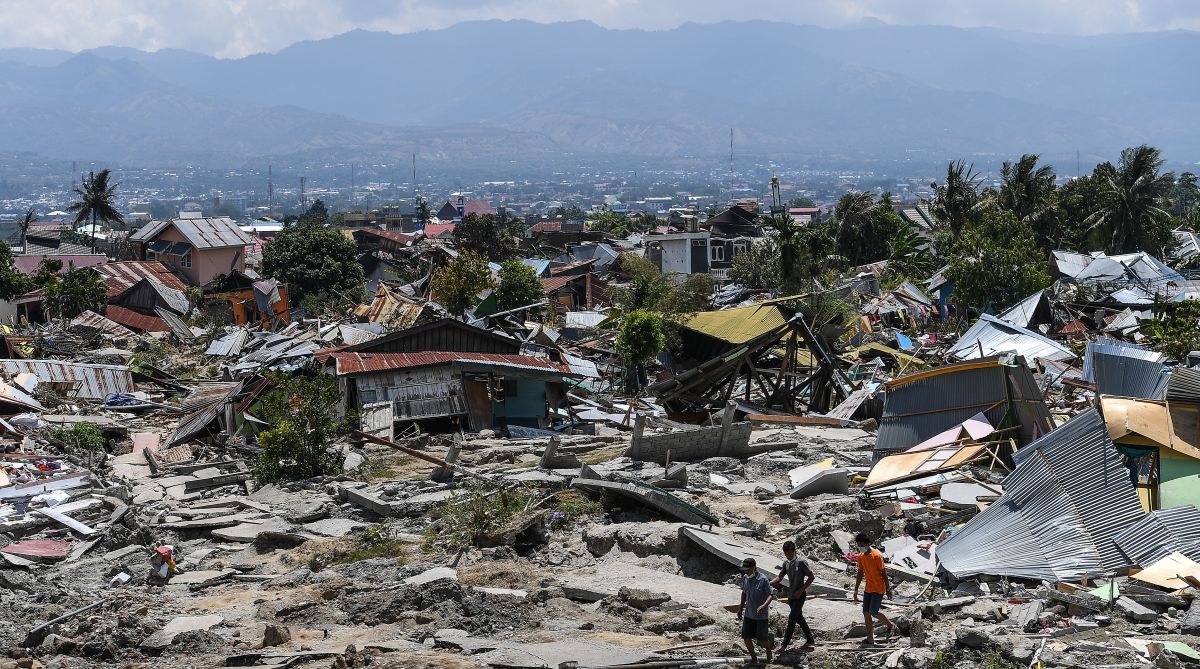Kenya secures funding to tackle climate change challenges
The United Nations (UN)-backed Green Climate Fund (GCF) has approved 50 million US dollars for key projects to bolster climate resilience and promote sustainable development in Kenya.
More than 200,000 people have been displaced and over 3,000 people have lost their lives or are missing due to the recent disasters, according to the UN.

Residents walk amid debris in Perumnas Balaroa village in Palu, Indonesia's Central Sulawesi on October 2, 2018, after an earthquake and tsunami hit the area on September 28. (Photo: AFP)
The UN Food and Agriculture Organization has launched a recovery programme to help more than 70,000 Indonesian farmers and fishers grow food and fish again following a series of disasters that just over a month ago devastated their lives, the FAO said.
The country’s deadliest earthquake in more than a decade, a tsunami and then landslides wreaked havoc on people’s homes and lands, and caused widespread loss of life and displacement, a FAO statement said on Monday.
Advertisement
Over the next three months, FAO aims to reach 50,000 farmers with vegetable seeds, fertilizers and small hand tools, such as shovels and hoes. A further 20,000 fishers will receive fishing equipment kits. The families live in areas that were hardest hit by the disasters – Donggala, Sigi, Palu and Parigi Moutong in Central Sulawesi Province.
Advertisement
FAO is also setting up a cash assistance scheme to support 4,000 pregnant women and mothers with children under five years old to enable them to access the nutritious food they need.
“Families in Central Sulawesi highly depend on farming and fishing. For most, this is their only source of food and income,” said Stephen Rudgard, FAO Representative in Indonesia.
“Now this has been taken away from them. They lost their crops and their means to grow or access food again – their farming tools, seeds, and fishing gears,” he went on.
Although many Indonesians have lived through such disasters before and are resilient, FAO’s support to the government will help the people of Central Sulawesi recover and restore their food production as quickly as possible, preventing more hunger and suffering in future, added Rudgard.
The agriculture and the fishing sectors have suffered severe damage, but FAO fears that the extent of damage is even more severe, with figures expected to rise once a thorough assessment is carried out, said the statement.
To date, it is estimated that nearly 10,000 hectares of agricultural land has been damaged due to tsunami, with rice and maize crops being most affected. The loss of vegetable production is also estimated to be particularly high. In Sigi District, damage to the main irrigation system has cut off water supply to over 8, 000 hectares of farming land and aquaculture area.
The situation poses a high risk of further crop losses due to reduced agricultural labour, loss of stored agricultural supplies and limited access to seeds, fertilizers, tools and irrigation, FAO warned.
Several fisheries and aquaculture facilities, including fish hatcheries, landing sites, boats and fishing equipment have also been severely damaged or lost, the UN agency said.
More than 200,000 people have been displaced and over 3,000 people have lost their lives or are missing due to the recent disasters, according to the UN.
Advertisement